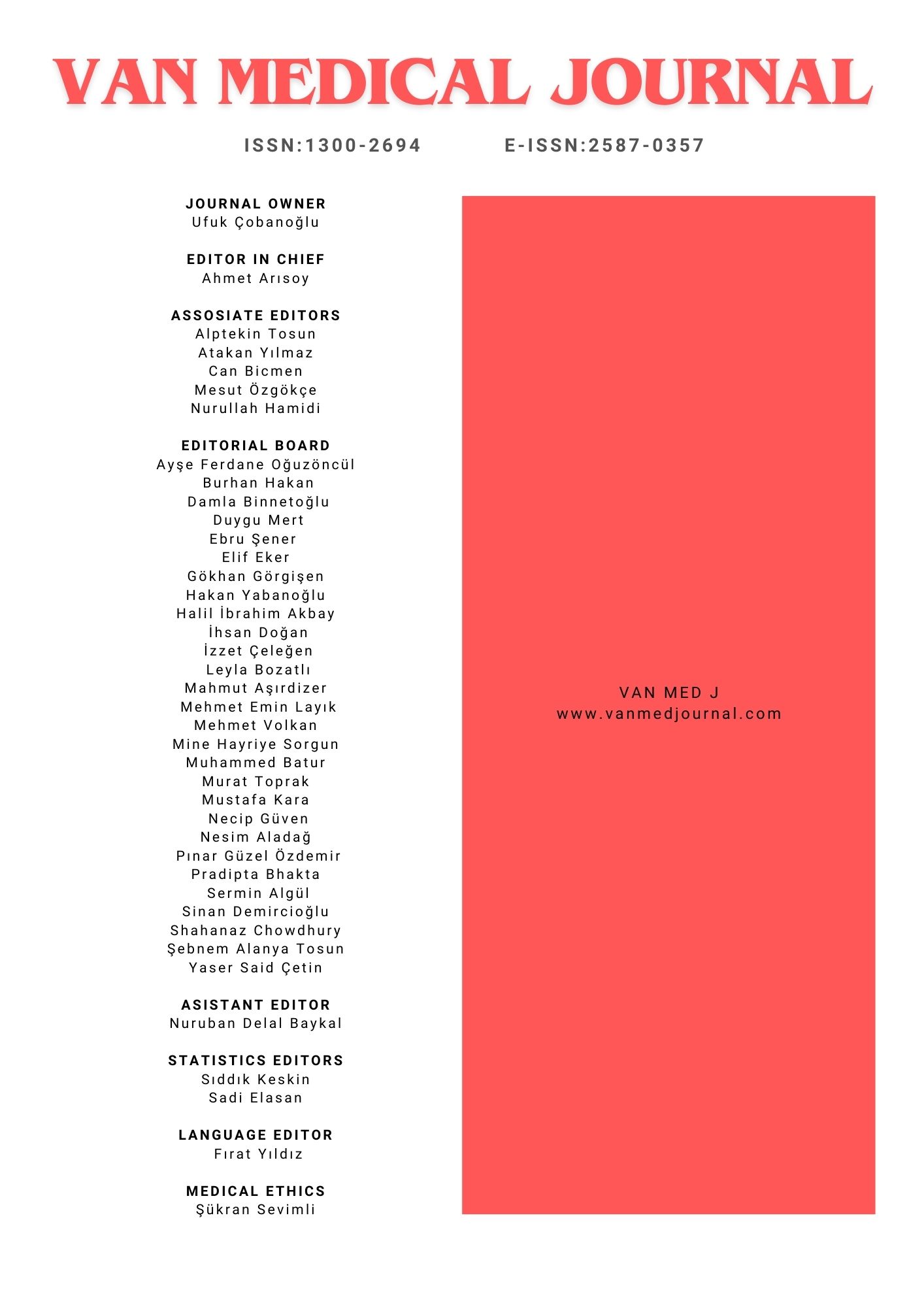Contribution of Ultrasound Strain Elastography to the Differentiation of Benign and Malignant Thyroid Lesions: Randomized Controlled Study
Harun Arslan1, Zülküf Akdemir2, Alpaslan Yavuz1, Necat İslamoglu2, Mesut Özgökçe1, Hüseyin Akdeniz1, Abdussamet Batur1, Nazım Bozan3, Sebahattin Çelik4, Ali Mahir Gündüz11Van Yuzuncu Yil University, Dursun Odabaşı Medical Center, Department Of Radiology Van/ Turkey2Van Healt Science University, Training And Research Hospital Department Of Radiology. Van/ Turkey
3Van Yuzuncu Yil University, Dursun Odabaşı Medical Center, Department Of Otorhinolaryngology Van/ Turkey
4Van Yuzuncu Yil University, Dursun Odabaşı Medical Center, Department of General Surgery VAN/ TURKEY
INTRODUCTION: We aimed to investigate the contribution of strain elastosonography to the differentiation of benign and malignant thyroid nodules.
METHODS: The retrospective study included 135 patients who were detected with thyroid nodules on ultrasonography and then underwent fine-needle aspiration biopsy (FNAB). Semi-quantitative strain elastographic evaluation was performed and mean strain ratio was calculated for each nodule. The elastograms were classified using the Tsukuba five-pattern visual scoring system. Accordingly, the lesions with scores 1 and 2 were accepted as soft nodules (benign), score 3 as moderately hard nodules, and scores 4 and 5 as hard nodules (malignant). The nodules were divided as benign and malignant depending on the histopathological results. The FNAB results were compared with elasticity scores.
RESULTS: The patients included 18 (13.3%) men and 117 (86.7%) women. Of the 135 lesions, 113 (83.7%) were benign and 22 (16.3%) were malignant. Strain ratio value was statistically higher in malignant lesions compared to benign lesions (p<0.01). When compared with the histopathological results, elastosonography scoring had a sensitivity of 81.8%, specificity of 89.4%, positive predictive value (PPV) of 96.2%, and negative predictive value (NPV) of 64.7%. However, compared with the strain ratio values, elastosonography scoring had a sensitivity of 77.3%, specificity of 87.6%, PPV of 95.2%, and NPV of 54.8% at a cutoff point of 4.850.
DISCUSSION AND CONCLUSION: Elastosonography is highly effective in the differentiation of benign and malignant lesions.
Corresponding Author: Harun Arslan, Türkiye
Manuscript Language: English

